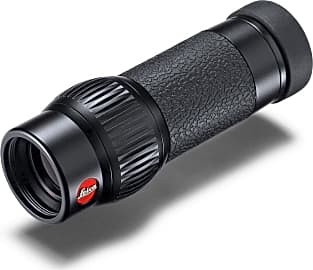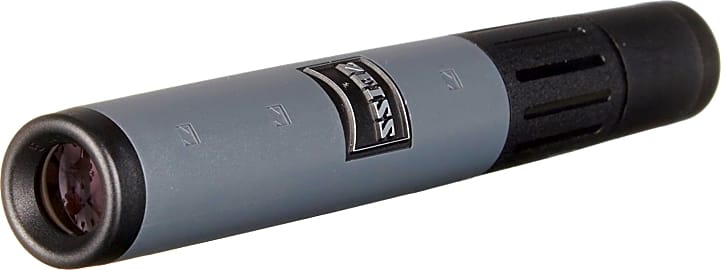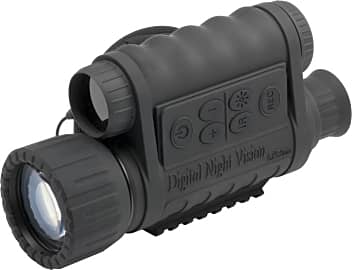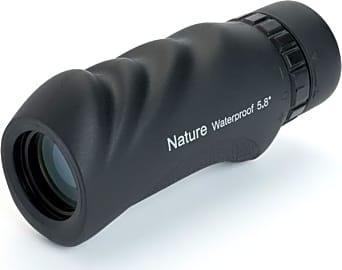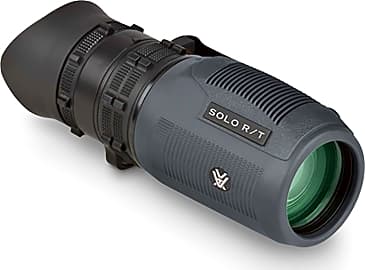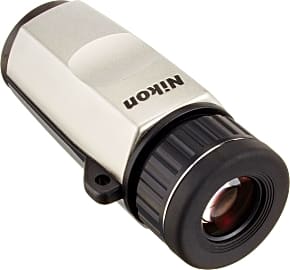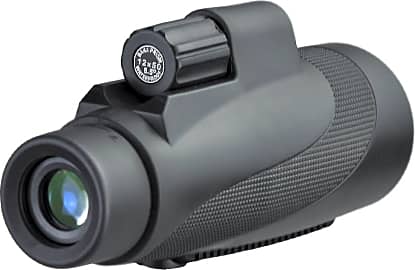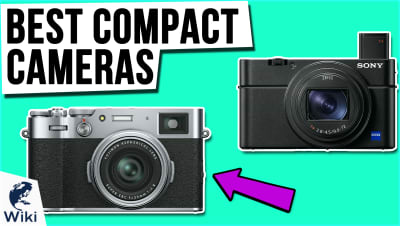The 10 Best Monoculars

This wiki has been updated 46 times since it was first published in April of 2015. Useful for observing faraway wild animals and landscapes, stargazing, playing paintball, or simply bringing distant objects into clear view, these monoculars offer high-quality optics in a compact and portable package. They're available in a range of designs with different magnification capabilities, including infrared models that allow for both daytime and nighttime use. When users buy our independently chosen editorial choices, we may earn commissions to help fund the Wiki.
Editor's Notes
November 02, 2020:
Today the Leica Monovid comes on board, which is a well-designed model from a German company known for its high-quality cameras and binoculars. This highly compact device is easy to bring with you on excursions, thanks to its light weight and its sturdy leather storage case. Unlike many others, it also comes with an attachable macro lens that allows you to view objects at close distances of only 10 to 12 inches. It’s got a padded pull-out eyepiece and a grooved rubber focus dial that allows you to use it with either one or two hands. It rejoins our selection after having been removed from the list in the last update due to availability concerns. In addition, joining the list today is the Celestron Nature, a budget-friendly choice that is also compact enough to fit easily into a pocket. Its soft rubber eyecup makes it easy to use with eyeglasses, and it comes with handy accessories like a belt case, a lanyard, and a cleaning cloth. Leaving the list to make room for the two new additions are the Roxant Ultra-Light, which is rather difficult to keep stable, and the Wingspan Optics ProSpotter, which is unavailable at this time.
We still think the Bushnell Legend is worthy of a prominent place on the list, as it’s lightweight and travel friendly, yet is still capable of rendering high-definition, bright images. It works well either in the hand or when mounted to a tripod to keep it stable. Also on the list are two models from Zeiss, one of the leading manufacturers of binoculars and spotting scopes. The Zeiss Victory is equipped with ballistic information software designed to help you correct the holdover point with ease. Its high-performance optics provide bright, detailed images, even in low-light conditions. The Zeiss Conquest features a nonslip coating for a firm grip, and dependable weather sealing for clear viewing in any conditions. This one comes with a leather pouch and a carrying strap, so you can take it with you on nature walks and other excursions. For a budget-friendly, beginner-level model, check out the Gosky Titan, which gives you clear images even from very far away. Its waterproof construction makes it a good choice for those who intend to use it outdoors in all sorts of weather conditions.
November 27, 2019:
Eliminated the Orion Zoom 8439 due to a glaring lack of durability and poor focus capabilities. The Leica 8x20 Monovid had to be removed as well; it was no longer available.
For the money, it’s tough to find a monocular that offers durability, clarity and ease of use to match the Wingspan Optics Outdoorsman. Users like that it performs well in low light conditions and features a lens cap attached by a tether to prevent you from losing it. We moved this item up in the rankings.
The two new additions are geared toward different types of users: the Roxant Ultra-Light for travelers on a budget, and the Zeiss Victory for passionate, experienced birdwatchers, hunters and nature enthusiasts who will only settle for the industry’s top technology. The latter model can measure distances up to 1,000 yards with precise accuracy, and its well-built body makes it simple to keep the image stable and unwavering.
Special Honors
Irie AT Telescope It’s not the most innovative model and it won’t blow you away with its power, but the Irie AT monocular is tough and compact, with an intuitive design that anyone can get a feel for in a hurry. It’s easy to hang on to its grippy body, and the twist focusing mechanism is a piece of cake. irie-at.com
Taking The Long View: Distance Optics
He pointed it skyward, becoming the first person known to have beheld a celestial object in a manner refined beyond the vision of the naked eye.
The earliest functional telescopes were designed by Dutch spectacle makers in the first years of the 17th Century. In the year 1609, Italian astronomer (and mathematician and philosopher and scientist writ large), Galileo Galilei designed an improved version of those first refracting telescopes. He pointed it skyward, becoming the first person known to have beheld a celestial object in a manner refined beyond the vision of the naked eye.
From those rudimentary optical devices have descended everything from the observatory to the Hubble Space Telescope, to the pair of binoculars tucked into the backpack of the hiker. And of course something else was born, too: the field of modern astronomy and a better understanding of the entire universe.
Today, there are many reasons for why a person might want to extend his or her vision out across a great distance. With the right optical hardware, one can enjoy a better view of a sporting event, concert, or a parade. Enhanced long distance vision is important for bird watching and other nature activities, or for hunting, too. In a tactical situation, such as a police stakeout or combat scenario, the better one can see from farther away, the safer they and the team remain and the better they can control the unfolding events.
Long distance viewing can also be important for various professional applications, such as surveying land prior to development, or in studying city streets or highways before an improvement or repair project. And of course the stargazer needs good optics to best enjoy the celestial bodies above.
Choosing the right device for your long distance viewing needs might not involve considering a massive astrographic telescope, but there are still a few considerations to keep in mind.
Why Monoculars Are Often Better Than Binoculars
If there is one primary reason why a monocular is often a better choice than a pair of binoculars, it is weight. By the very nature of their design, a pair of binoculars will usually weigh twice as much as a monocular with equivalent magnification power. If you're assembling a kit for use in a tactical situation or you are a trekker or climber carrying your gear over long distances, weight matters.
If you're assembling a kit for use in a tactical situation or you are a trekker or climber carrying your gear over long distances, weight matters.
While many people prefer the stereo vision afforded by binoculars, which recreates the way the human eyes see together, when you are trying to view a distinct object or a limited area without much depth, the monocular's flatter view can help you isolate the image more easily.
Because binoculars usually allow focusing adjustments for both eyes, with a center knob controlling both sets of optics and one side of the unit featuring another ring for fine tuning (most people have slightly different vision quality in each eye), they can provide a sharp view indeed. But that also means more effort required to achieve this sharp view, and it means more potential for improperly focused optics that can cause frustration, eye strain, and that can hamper your distance vision instead of helping it.
Monoculars also offer enhanced potential for situational awareness, as you can maintain your view of the long range object or area in question yet open the other eye for a quick review of the space closer to your person. This can be of critical importance in combat or emergency situations.
Choosing The Right Monocular For You
The first thing to note when considering which monocular you will buy is magnification power. But consider the fact that stronger is not always better. The more powerful a monocular's magnification power, the harder it will be to keep it steady and in focus. If you are hoping to get a better view of objects that aren't that far away, or if you value a wider field of vision over greater range of vision, than look for a monocular with midrange magnification over one with extreme power.
Opt for a smaller monocular and enjoy the view it affords you, even if other larger models have better magnification.
Choosing a monocular that has a zoom feature can mitigate the issue of too much power, but with zooming in and out comes even more difficulty in achieving perfect focus, so know the give and take a zoom option offers you.
Next consider the time of day during which you will use your monocular. Many monoculars have amazing light gathering capabilities and work well even in darkness. Still others have actual night vision capabilities, sending out their own infrared light that can you can detect thanks to their specialized lenses. A night vision monocular is a great idea for many nature scientists or for use in tactical situations. However, most monocular that work well at night have optics that are objectively inferior in daylight. If you are primarily going to use your optical gear during the day, then you have many more options for a good monocular.
Ultimately, choosing the right monocular may well come down to its physical size and weight. If you are a hiker who regularly carries large loads of gear on your back, then every ounce matters. Opt for a smaller monocular and enjoy the view it affords you, even if other larger models have better magnification. If you are unconcerned with gear weight, then by all means choose an option large enough to be used as a spotting scope while hunting or as a compact telescope for viewing the firmament.



